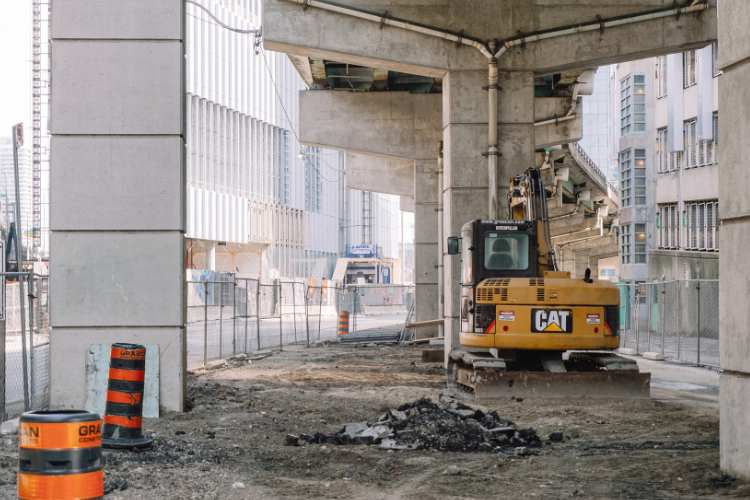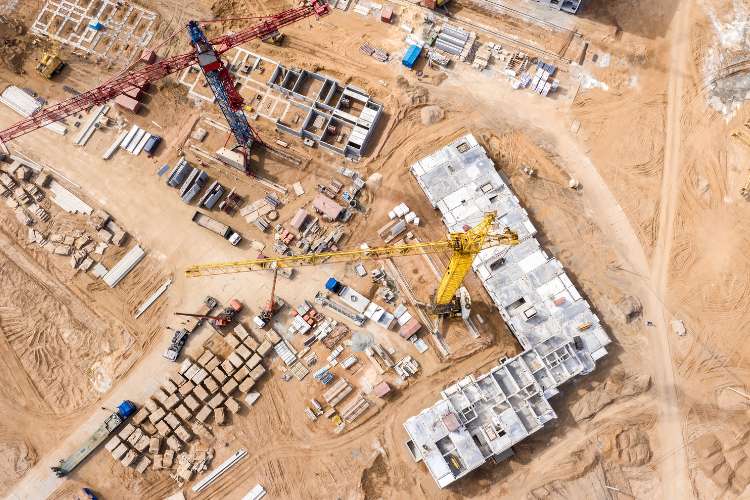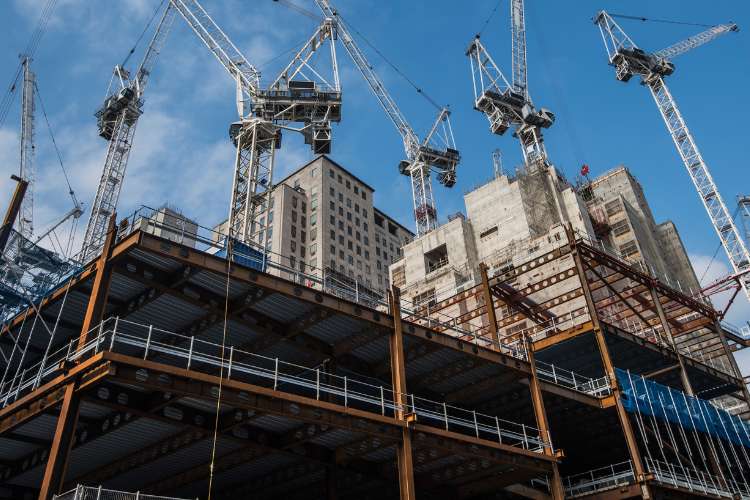Moving into the $8-25 million revenue range as a subcontractor marks a crucial phase of strategic growth. Leadership skills and strategy take priority as owners plan for long-term success. We asked Jerry Aliberti, principal at Pro-Accel to share his insights for areas of focus as a sub moves into the $8M to $25M revenue range.
Mindset is king in the $8-25M stage. If the owner has a clear and ambitious mindset about where they want to take the company, this is the stage where they can create a plan to get there. Cash flow has improved here and the company may be able to reinvest profits back into the company; debt is taken on and paid off more quickly than in earlier stages of the company’s history. “This is where subs learn who they are, where they wanna go, and what they’re capable of,” Aliberti says.
Table of Contents
Key Challenges for Subcontractors at the $8-25M Stage
Challenges in this stage will depend on how well the owner has created processes and added key hires in the earlier stages of the company. Have they been diligently delegating, training employees, and ensuring the right people are in the right roles? Are they bidding work that aligns with their strengths? Are they developing a long-term strategy to help the business scale? All of these considerations will help the business scale faster than those who aren’t taking these factors into consideration.
Some key challenges subs face at this size include:
- Larger Projects: Larger projects can mean more headaches. The problems that existed in earlier phases of the business might still be problems; now they’re amplified.
- Leadership Training: At this point, the owner isn’t just delegating; they’re relying heavily on their own leadership and establishing an internal hierarchy. If leaders weren’t properly trained when the business was smaller, this is when they’ll feel the pain of that lack of planning. The owner has designated the leaders in their positions and they must respect their roles. The field crews who have issues must first go to the Super. If the Super can’t handle the issues, they go to the PM. If the PM needs further assistance, then they can go to the next level up of management or possibly the owner. This mindset and culture not only empower leaders, but also continue to allow the owner to step out of the day-to-day operations so they can focus on strategic development. Remember, leaders must have the resources they need to make great decisions.
Operational Changes to Make at this Stage
Bid Larger Jobs
This is when the owner wants to bid both larger and more “Tier 1” work. Earlier, we referred to the process of creating a tier-ranking system for projects, outlining what makes a project their “bread and butter” compared to those that are less of a fit. It’s critical to use that system now and bid the best, most aligned work possible; this is a risk reduction strategy in and of itself. When a sub is doing projects that either aren’t aligned with their true skillset, or projects with disorganized or late-paying GCs, they inherently take on more risk. Being selective with the work they choose helps them minimize these risks. That said, factor in the size of the job as well, because larger projects will contribute to the growth sought at this stage. This is also a great stage to consider diversifying into other markets to offset economic downturns.
Develop a Strategy for Growth
As the business develops momentum, create an action plan for how the business will hit the $50-100M revenue bracket. Gather the company’s leaders in a room and outline a clear, long-term action plan The plan should be max two years because in the construction industry, developing long-term strategies beyond two years becomes more difficult due to the numerous challenges contractors face. The dynamic nature of the market, economic downturns, regulatory changes, increasing complexity of projects, and many more external challenges that a company doesn’t have control over all contribute to the complexity of planning far into the future.
Only contractors aiming for substantial growth, such as acquiring multiple companies, expanding into different regions, or making other significant moves that require major capital and process changes, should consider five-year plans. These large expansion goals necessitate a longer timeline to achieve the desired outcomes realistically.
Conversely, if a subcontractor aims to diversify their portfolio, bid on larger projects, and achieve growth rates from 10% to 20%, they should limit their strategy to a two-year plan. The logic behind this is that beyond two years (or even 12 months in some cases), it’s challenging to develop a realistic roadmap without frequent changes, especially in the construction industry. Two-year strategies allow for more aggressive planning with greater internal control.
In summary, five-year strategies are suitable for large expansion goals that require a long-term vision, while two-year strategies are better for more aggressive planning with achievable targets within a shorter time frame.
To develop a strategy, start by assessing the company’s current position. Aliberti prefers to use a SWOT analysis (Strengths, Weaknesses, Opportunities, and Threats). Next, prioritize goals and break them down into actionable steps for each quarter, tying success metrics to these steps to ensure the business is progressing towards its goals each quarter. For this, the VSEM method is particularly effective:
- Vision: Set 5-year or 2-year goals
- Strategy: Identify the 2-3 strategies to achieve the vision
- Execution: Define 4-6 goals PER quarterly year that must be accomplished to support the strategy.
- Metrics: Assign measurable success metrics to each goal and strategy to track progress. Be flexible and adjust accordingly.
By following this structured approach, a sub can develop a strong and adaptable strategy that aligns with business objectives and the unique challenges of the construction industry.
Break it down into actionable steps and tie metrics to them so the business can measure success. Also, determine when it’s necessary to readjust to get back aligned with goals. It’s strongly recommended to hire outside consulting for this process. They’ll not only provide a fresh perspective, expert structure, and a framework, but they’ll also provide unbiased advice, which is critical to the strategy’s success.
Mine Historical Data for Insights
The business should now have a trove of historical data to help owners understand a business’s strengths, conduct cost analyses, and assess its ability to stay on budget. Building better, more accurate budgets can prevent disruptions in cash flow and allow the business to continue reinvesting in itself.
It’s important to note: All contractors at every stage of growth MUST be tracking labor costs. The business owner needs real-time data weekly and monthly so they can change course quickly and get back on track with costs. This must be a habit and will absolutely help fuel growth. Start simple with Excel spreadsheets then introduce new technology.
Become Bondable
It’s now important to most GCs that a sub become bondable, because they may consider non-bondable subs too risky. A fractional CFO can take this on their shoulders.
Hiring at This Stage
More revenue also gives the business more money to invest in a sophisticated leadership team. Consider offering equity or profit sharing as not only a competitive part of their compensation package, but also a way to get new leaders invested in the team and success of the organization.
In addition to a larger C suite, including a fractional CFO, consider the following recommendations around hiring:
- Hire More Supportive Roles: At this stage, the business will need enough PMs to dedicate these resources to specific, critical jobs. This can look like a team of senior PMs and assistant PMs. The owner should also hire a general Super who has multiple Supers under them, as well as assistant Supers.
- Promote Within: This is a perfect time to reward the people who decided to stick with the company in its earlier stages by finding or creating more senior roles for them.
- Hire a Fractional HR Person: Although full-time HR may not be necessary at this time, a fractional HR resource is a must. They can help recruit and onboard the best candidates and set up benefits packages.
Some subs who hit the gas pedal on growth find they hit a ceiling around $20M. Why? The answer, in Aliberti’s eyes, is simple: people. Even if a sub is able to go from $25M to $75M overnight, many will find their growth stall because of their people, either because of a lack of lean processes, proper delegation, or trust in the team. Owners may still be scared to let go, which is typically a bad sign.
Aliberti’s Best Tips for This Stage: Don’t Pad the Owner’s Pockets, Use Good Debt to Grow
After hitting larger revenue goals, some owners may start “buying Ferraris and big houses,” rather than reinvesting in the company and its people, according to Aliberti. This preemptive, self-congratulatory behavior is disastrous if the business is still dealing with GCs who keep them waiting through net 120 terms. Keep focused on the long-term strategy, and reinvest back into the business.
Subcontractors at this level are routinely including fees for things like financing and equipment in their estimates to help protect their margins. Aliberti recommends using good debt to fuel business growth. Good debt is characterized by a lender’s due diligence in not lending money that can’t be paid back; they lend money that can be used to free up cash for further reinvestment.
The $8-25M stage tests all subcontracting execs. As they scale operations, choose better projects, and use debt strategically, they can build a resilient foundation for sustained success in the construction industry. In our next article, Aliberti will share tips for conquering the $25M+ stage.







